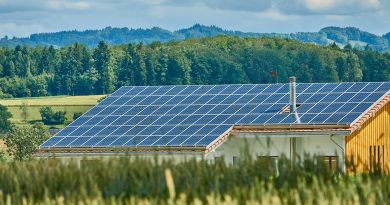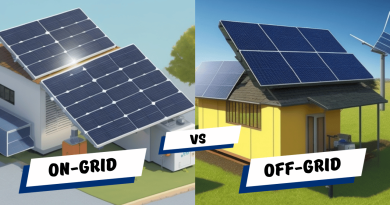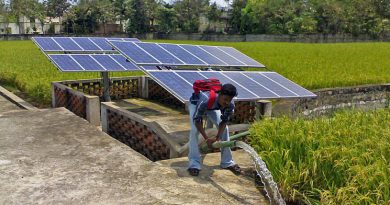Solar Rooftop Subsidy in Andaman and Nicobar Islands
The Andaman and Nicobar Islands, known for their pristine beauty and strategic location, have been making strides toward renewable energy adoption. Solar energy, particularly rooftop solar systems, has gained momentum as a sustainable solution for the islands’ energy needs. To promote this transition, the government has introduced various subsidy schemes aimed at making solar rooftop installations more affordable for residents and businesses.
Table of Contents
Solar Rooftop Subsidy Scheme
The Andaman and Nicobar Administration, in alignment with the Ministry of New and Renewable Energy (MNRE), has implemented a subsidy scheme under the Rooftop Solar Programme Phase II. This initiative aims to increase the uptake of solar energy by offering financial incentives to residents who install grid-connected rooftop solar systems.
Subsidy Structure
The subsidy scheme in Andaman and Nicobar Islands is designed to reduce the upfront cost of solar installations, making it accessible to a broader population. The key features of the subsidy scheme include:
- Central Financial Assistance (CFA): The central government provides a subsidy to reduce the cost of solar rooftop systems. The subsidy varies depending on the capacity of the system installed.
- Eligibility: The subsidy is available to residential, institutional, and social sectors. It is not applicable to commercial or industrial sectors.
- Implementation: The scheme is implemented through empaneled vendors approved by the local distribution companies (DISCOMs).
Subsidy Rates
The following table outlines the subsidy rates for various capacities of rooftop solar systems in Andaman and Nicobar Islands:
| Solar System Capacity | Subsidy Rate | Applicable Sectors |
|---|---|---|
| 1 kW to 3 kW | 40% of the benchmark cost | Residential |
| Above 3 kW to 10 kW | 40% for first 3 kW, 20% thereafter | Residential, Institutional, Social |
| Above 10 kW | 20% of the benchmark cost | Group Housing Societies/ RWAs |
Note: The benchmark cost is determined by the MNRE and is subject to change based on market conditions.
How to Avail the Subsidy
To avail of the subsidy, residents of Andaman and Nicobar Islands must follow these steps:
1. Selection of Vendor: Choose an empaneled vendor listed by the local DISCOM.
2. Application: Submit an application through the vendor to the DISCOM for approval.
3. Installation: Once approved, the vendor will install the rooftop solar system.
4. Claiming Subsidy: After installation and inspection by the DISCOM, the subsidy amount is directly transferred to the vendor, reducing the overall cost for the consumer.
Conclusion
The Andaman and Nicobar Islands are taking significant steps towards sustainable energy solutions through the promotion of rooftop solar systems. With attractive subsidies in place, now is an excellent time for residents to invest in solar energy, reducing their carbon footprint and contributing to a greener future.
By leveraging the available subsidies, you can significantly reduce the cost of your solar installation, making clean energy more affordable and accessible. For more information, consult your local DISCOM or visit the official MNRE website.
Here at SolarClue®, we offer a smart, practical, and “beautiful” solution. You will be answered for all the questions related to Solar.
We provide all kinds of brands that are the Best Solar panels in India.
If you are the one who is planning for the solar power system. Don’t hesitate to contact our team!
Looking forward to empowering you with solar energy, just like hundreds of our other clients!
FAQs
1: Who is eligible for the solar rooftop subsidy in Andaman and Nicobar Islands?
A: The subsidy is available to residential, institutional, and social sector consumers. Commercial and industrial consumers are not eligible.
2: How much subsidy can I get for a 5 kW solar system?A: For a 5 kW system, you can receive a 40% subsidy on the first 3 kW and a 20% subsidy on the remaining 2 kW.
3: Can I install a solar system larger than 10 kW and still receive a subsidy?
A: Yes, systems larger than 10 kW are eligible for a 20% subsidy on the benchmark cost, but this is generally applicable to group housing societies or residential welfare associations.
4: How do I apply for the solar subsidy?
A: You can apply through an empaneled vendor who will handle the application process with the local DISCOM.
5: Are there any maintenance costs associated with the solar system after installation?
A: While the initial installation may be subsidized, ongoing maintenance costs are generally the responsibility of the consumer. Some vendors offer maintenance contracts as part of the package.




